“In 2024, Tamil Nadu is set to create history as the epicentre of the politics of development in India,” said Prime Minister Narendra Modi, addressing a public meeting in Tirupur, Tamil Nadu on February 27.
“There is no bigger question than this [caste census]... There is a ceiling of 50% for reservations right now. When we come to power, we will throw this ceiling away...” said Rahul Gandhi, on February 5, in Ranchi, Jharkhand
The BJP, which has been in power with an absolute majority in the Lok Sabha for two five-year terms, appears confident of a third term in 2024. The party has set a target of 370 seats in the Lok Sabha, which has 543 members; and a popular vote share of more than 50%. In 2019, the party had won around 37% of votes and 55% of the Lok Sabha’s seats.
The BJP has captured sufficient aspects of Indian politics so comprehensively — through ideological hegemony, institutional and informal methods, and by plain subterfuge — that any electoral contest appears one-sided. As an ideological project, Hindutva has never been as widely acceptable across caste groups and geographical areas as it is today. Disenchanted segments are appeased through government schemes or controlled with state power. The battlefield has been engineered by one of the contestants, the BJP, to disadvantage its opponents. Institutional checks to the arbitrary power of the executive, expected particularly from the Supreme Court of India and the Election Commission of India in this context, have been feeble, if at all they are carried out. Occasional rhetoric from the top court about democracy — such as in the judgment that struck down the secretive fundraising mechanism called electoral bonds, or when it declared the Aam Admi Party’s (AAP) candidate the victor in a Chandigarh mayoral election marred by vote tampering — has been alleviative rather than redemptive. No election in living memory has been as predictable, yet as consequential for India, as this one.
Editorial | Combat mode: On the BJP and the general election 2024 campaign
The BJP is synonymous with Mr. Modi and the Opposition Congress is synonymous with Mr. Gandhi, but caveats are necessary. The BJP wants to emerge as a truly national party in this election, by spreading its wings to all regions, particularly peninsular India. The Congress wants to arrest its continuing decline and hold on to its shrinking national footprint by creating a new opening in the Hindi heartland, among the Other Backward Classes. Having established his sway over politics north of the Vindhyas, from the east to the west, Mr. Modi is now out to woo Tamil, Malayalam, and Telugu speakers. While Mr. Modi is trying to reach out to the geographical bottom of India, Mr. Gandhi is addressing the social middle of the Hindi heartland. Mr. Modi is looking south for his national status; Mr. Gandhi, who had painted himself into the Wayanad corner — a largely Christian-Muslim constituency which elected him to the Lok Sabha in 2019 — now wants to take the fight back to the heartland, by talking about caste. Mr. Modi seeks to tame caste consciousness while acknowledging it, and underscores religion as the primary marker of political identity. This is a refinement of classical Hindutva politics. Mr. Gandhi seeks to bring caste into the centre of political discussions, which is a departure from the Congress politics of his forebears — Jawaharlal Nehru, Indira Gandhi, and Rajiv Gandhi.
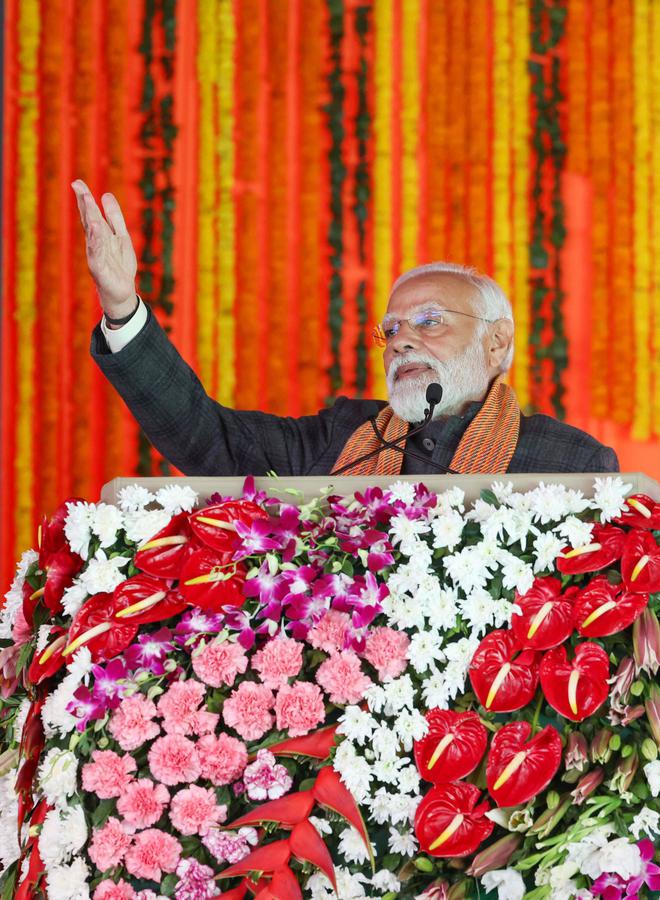
Mr. Modi’s writ runs deep into the organisational behemoth comprising the BJP, and the extended Sangh Parivar, at least as far as electioneering is concerned. Mr. Gandhi is ploughing a lonely furrow — there is hardly anybody in his party that is amplifying his message of caste justice. The synonymity of the party and the leader works differently for Mr. Gandhi and Mr. Modi. The information ecosystem in the country holds Mr. Gandhi solely responsible for everything wrong with his party, and any success is portrayed as despite him. Mr. Modi’s popularity, in contrast, is despite his party, the BJP. This perception is partly manufactured by the BJP, which has made itself irrelevant and its leader supreme in the process. But neither Mr. Gandhi nor Mr. Modi controls their followers: in the former’s case, his followers don’t follow his politics; and in the latter’s case, the followers are ahead of the leader. Hindutva politics has gained autonomy from its masters.
Saffron dreams in Tamil
In his second term, Mr. Modi paid special attention to the south. The BJP’s national vote share is concentrated in some States.
Efforts to soften the Dravidian resistance to the BJP have been relentless in the last five years, and the 2024 elections will test the success of those measures. The Kashi Tamil Sangamam brought 2,500 people from Tamil Nadu to Varanasi in 2022; the Saurashtra Tamil Sangamam in 2023 brought Tamils to Gujarat — both events meant to showcase the cultural linkages between the deep south and the Hindu heartland. A golden sceptre presented to Jawaharlal Nehru on August 14, 1947, by the deputy high priest of the Thiruvavaduthurai Adheenam, a 500-year-old Saivaite monastery in Tamil Nadu, has been repurposed as the emblem of parliamentary sovereignty, and showcased inside the chamber of the newly constructed parliament building. Mr. Modi has cited Tamil cultural icons such as Thiruvalluvar, and has spoken about the antiquity of the language multiple times, at national and international fora. It is not that he hopes to pick up a large number of seats in T.N., but rather that he wants to gain acceptance among more social groups and locations. In the process, he also hopes to blunt the taunt that 63% of the country’s electorate did not actually favour him in 2019.
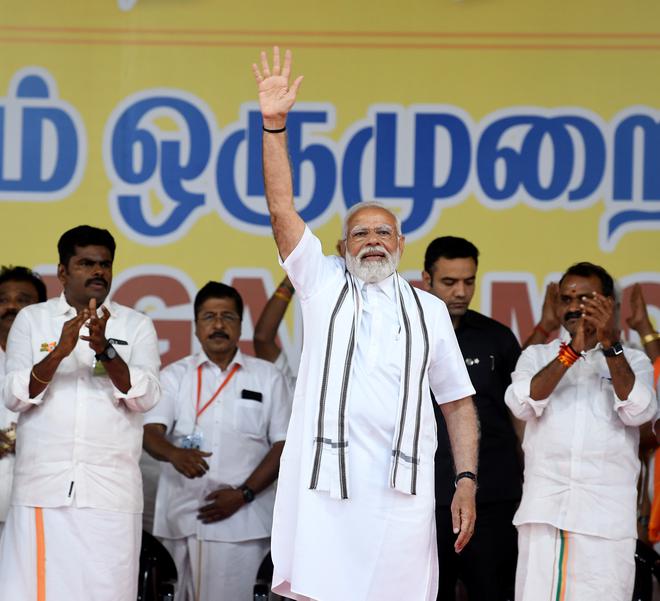
No winning party in the history of the Republic has touched a 50% vote share.
At its peak in 1957, the Congress had 48% of the votes and 75% of the seats in the Lok Sabha. The Congress’ dominance was spread across all the regions of the country. Mr. Modi wants to match that. Though the State of Kerala is relatively inconsequential for winning power at the Centre, BJP leaders are regularly deployed in the State. Mr. Modi himself has visited the State several times over the last five years. Ahead of the opening of the Ram Temple in Ayodhya in January, Mr. Modi visited several sites and shrines in the south, mapping a modern recreation of the mythical sacred geography. The political undertones of these visits were hard to miss. Mr. Modi is trying to shed the BJP’s image among southern voters as a party of the Hindi belt. He also appears unsettled by the growing divergence between the southern and northern regions on multiple issues. Mr. Gandhi’s effort, meanwhile, is to shake off the label of being a leader of religious and linguistic minorities, and make an impact among voters of the Hindi belt.
Rahul among OBCs
Congress politics has traditionally sought to overlook caste in rhetoric, even as it largely remained a vehicle for the reproduction of upper caste dominance in the heartland of democratic India. There is little evidence from the 2023 Assembly elections that Mr. Gandhi’s clamour for a caste census has struck a chord with OBC voters. OBCs had traditionally felt excluded from the Congress social network, which was led by the upper caste segments of Hindus and Muslims, with Dalits coopted in. When Mr. Gandhi rhetorically asks people their caste in public interactions, the ambiguity of his own caste and religious identity becomes more pronounced. This deracination — dissociation from native cultural markers — was once a badge of honour for any liberal politician. But when a liberal politician seeks to address an ascribed identity in a polarised environment, it is not an easy act to pull off. While Mr. Gandhi has been trying to turn the spotlight on subaltern castes, the party’s key leaders and spokespersons remain upper caste. Mr. Gandhi is also dealing with a changed mindset among subaltern voters, who are excited by the glittering religiosity, spectacular ritualism, and newer pilgrimage networks being built by the state, which has abandoned any pretension of being secular.
Mr. Modi has found enough bridgeheads in the south. Powerful personalities, caste and religious entities, and others who are happy to be assimilated into a national identity rather than being aloof and provincial, now rally around him. Mr. Gandhi, meanwhile, is still struggling to recruit collaborators among the OBCs in the north. OBCs do not intrinsically trust the Congress — and in fact, Mr. Gandhi’s outreach to them might have spooked their champions.
Subnational autonomists
“Nitish Kumar is a practitioner of strategic autonomy,” York University political scientist Indrajit Roy said, commenting on the Bihar leader’s frequent jumps between the BJP and the Opposition. The strategic autonomy of the subnational forces does not want to be subsumed by the totalising politics of either the Congress or the BJP. Apart from Mr. Kumar’s personal ambitions, what made his continuation in the Congress camp untenable was Mr. Gandhi’s direct outreach to OBC voters. Subnational autonomists resisted the national politics of both the BJP and the Congress by swinging between the two opportunistically, among other strategies. Both major Dravidian parties, the Trinamool Congress, the Janata Dal (Secular), and the Telugu Desam Party have all done this in the past.
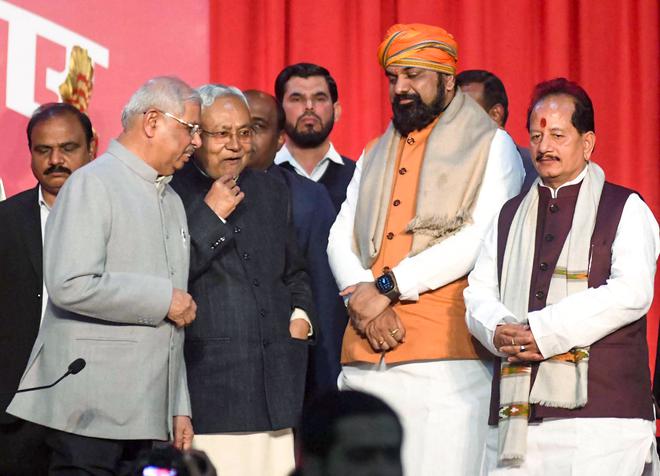
The BJP and the Congress both are now trying to subsume the distinct identity of OBC politics in Bihar and U.P. Subnational autonomists resist such efforts tooth and nail, and the usual template for that resistance is to align with the weaker of the two national parties. They historically feared the stronger of the two national formations more. Under Mr. Modi, that template has been turned on its head.
During the peak of the Congress’ power, the fear of its dominance made the BJP/Jan Sangh more acceptable to autonomists. In its current era of dominance, the BJP has made fear itself the most potent currency for political negotiations. Sectional interest groups are faced with state power, deployed as political weapons by the BJP that is in control of them. Central legal structures have not been built by the BJP, but it has sharpened them in an unprecedented manner for disciplining political deviations. The regional or subaltern interest groups that have tried to shake off from the national monolith and carve out their autonomous spaces are confronted with the machinery of central policing. There is a paradox of autonomism that the BJP is cleverly exploiting. Whether linguistic or caste driven, the assertion of autonomy is primarily to protect the economic and social interests of the mobilised groups.
Also Read | Seeking a third term as next five years will be crucial for country’s progress: PM
The relative liberal instincts of the previous Congress order tolerated these political spaces and negotiated with them. The BJP has so changed the terrain that resistance to its politics can be destructively costly; association with it can be marginally beneficial. Mr. Kumar’s predicament shows it in a stark manner, but the choice is the same for most players. Jayanth Choudhary, the leader of the RLD which is a vehicle of Jat interests in western U.P., made the same choice by switching to the BJP after testing the waters with the Opposition alliance. The JD(S) in Karnataka, which represents the sectional interest of a group of Vokkaligas has also made the same choice.
All these parties face the threat of being swallowed by the expansionist BJP. The 2024 elections will test the tenacity of the other standing autonomists, but one formation that appears to have completely collapsed is the Bahujan Samaj Party (BSP). Emerging as a platform of Dalit empowerment, it soon hit a ceiling and collapsed corresponding to the rise of the BJP. In Bihar, Dalit politics is fragmented across several parties, but they are mostly with the BJP. Dalit groups that tried to resist Hindutva politics outside of the electoral arena have faced the wrath of the state. The BJP under Mr. Modi has dismantled the old template that allowed subnational political actors to thrive, or at least survive.
The worst affected are the Muslims, in this new politics of Hindu consolidation. The last decade has seen a dramatic decline in political representation for Muslims.
The BJP has proved twice over, in 2014 and 2019, that it can win a national majority by completely excluding Muslims from the underlying social composition of its support. The Congress’ social combinations always included the Muslims and usually excluded some sections of the Hindus. In U.P. and Bihar, Congress politics did not cede much space to the OBCs, historically. The expanding political space of the OBCs provided by the BJP and the diminishing space of the Muslims are hence interlinked
That is yet another barrier for Mr. Gandhi’s politics — can he expand space for the OBCs and the Muslims simultaneously?
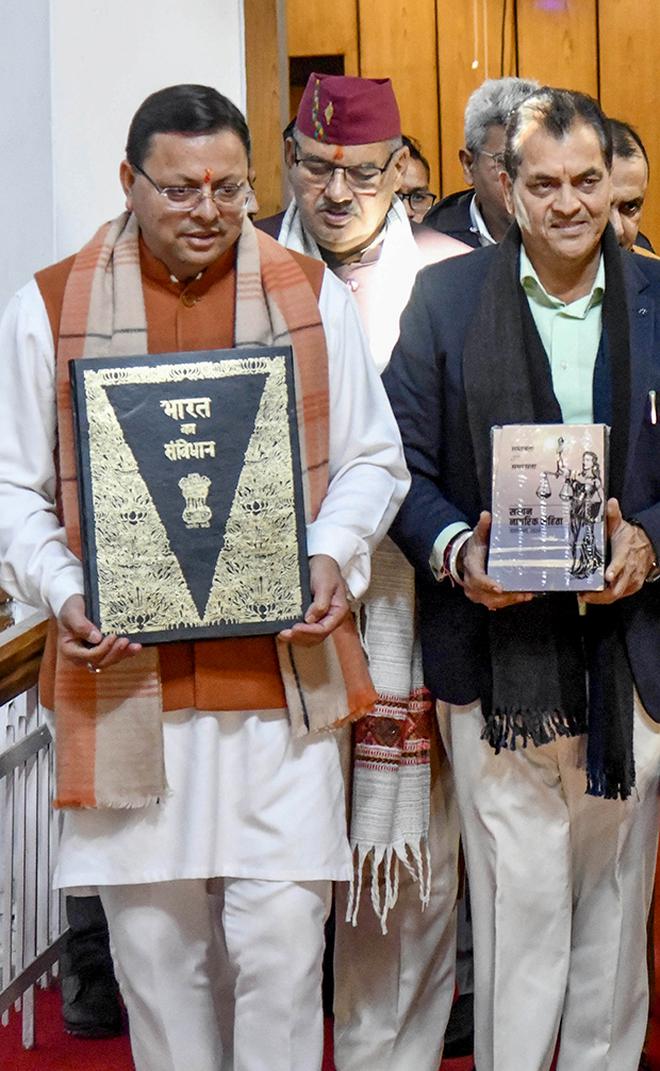
If the BJP manages to expand geographically and the Congress fails to make inroads among the OBCs of the heartland in 2024, the marginalisation of Muslims will continue and their cultural autonomy will further erode under state pressure. An immediate action point for a triumphant BJP could be the implementation of a Uniform Civil Code. In the event of any signs of a southern expansion, the BJP’s claim to be national will be reinforced, despite its exclusion of Muslims; and the Congress’s claim of being national will be weakened if it does not achieve wins above the Vindhyas, as it will increasingly represent only the religious, linguistic, and ethnic minorities.

“The expanding political space of the OBCs provided by the BJP and the diminishing space of the Muslims are hence interlinked”
Death of mediated politics
The deep ideological motivations of the BJP are self-evident, but it is being advanced through a completely depoliticised mechanism of representation. In 2024, India will witness the most commodified electioneering in history, in which technology, professional marketing agencies, and hired labour will push party workers to the sidelines. In fact, party workers as the mediators of politics are facing extinction. This is a secular process across parties — the Left might be the limited exception, if at all — but the most ideological BJP is leading the trend. Feedback from the public is gathered through professional survey agencies, funds are collected and distributed centrally, and candidates are centrally selected, with little role for local leaders. Workers and local leaders are assigned specific tasks based on intelligence gathered through such external mechanisms. Most importantly, communications are completely centralised with the aid of digital technologies.
In the BJP, the district presidents used to be key figures — they could control resources and networks, and bargain with the hierarchy. In 2014, the then-party president Amit Shah announced plans to build 512 offices across the country and a majority of them have already been built. With functioning and funds streamlined, the roles and powers of the district functionaries have been recast. “The end result is that anyone can be declared the candidate, and anyone can be made district president. Party work will not be impacted,” a BJP insider said.

“Anyone can dream of becoming a CM now in the BJP. This creates enthusiasm of a different order, and the resentment of the sidelined leaders does not add too much”BJP insider
This is a disempowerment of the workers from one perspective, but hugely empowering from another. Earlier, party positions were apportioned among powerful central leaders; now candidates and functionaries are selected purely from an efficiency point of view. There is no ideological commitment that is sought from any. Many ordinary workers get a chance in this scheme of things. Strong leaders of the BJP have been benched across the States, but relatively junior leaders have recently become Chief Ministers in Madhya Pradesh, Rajasthan, and Chhattisgarh. “Anyone can dream of becoming a CM now in the BJP. This creates enthusiasm of a different order, and the resentment of the sidelined leaders does not add to much.” the BJP insider said.
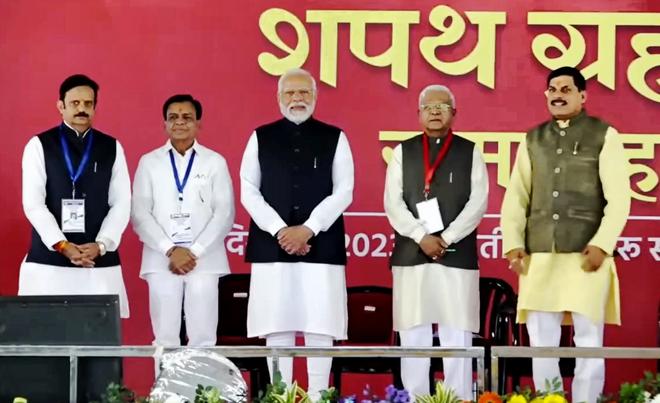
While the BJP has led and perfected this form of commodified, centralised electioneering, other parties are struggling to replicate the model. Opposition parties have become more dependent on local actors, and their capacity to centrally control the narrative or mobilisation has been restricted. They are starved of funds, and decentralised resource mobilisation attracts public ire and central investigators.
Also read: BJP’s CM picks for three States will be pointer to shape of its politics ahead
Absent guarantee
The BJP advances through both hegemony and dominance. Where hegemony does not work, it deploys instruments of domination. The Income Tax Department works where the Ram Temple slogan does not. The critics of the BJP focus on its coercive apparatus and conveniently overlook its expanding ideological hegemony. The Opposition’s inability to build a counter-narrative is due to both inherent weaknesses and structural factors. Nearly all Opposition parties are controlled by a single family. The social groups that traditionally supported them are disenchanted by the lost promise of their politics. And these leaders are also vulnerable to the call of the tax inspector.
The trajectory of India on the eve of the 18th general election depends more on the wisdom of the BJP and its leadership rather than any negotiated political equilibrium. The BJP is not really interested in negotiations with other political actors; and other current actors have no capacity to force the BJP’s hands — unless they prove otherwise in the coming months.
So the question is not who will win a majority but how the BJP will approach the minorities post-2024 elections. In the last ten years, religious and linguistic minorities have faced hostility from the ruling party. But the BJP has also made some tentative overtures towards them — the Pasmanda Muslims in the heartland, Christians in Kerala, Sikhs in Punjab, and the Tamils as discussed earlier. But there has been no consistency, and that is one question on which there is no ‘guarantee’ — the party’s key word for its 2024 campaign.
Watch: Ram Temple, Congress Nyay Yatra| What is in store for 2024?







